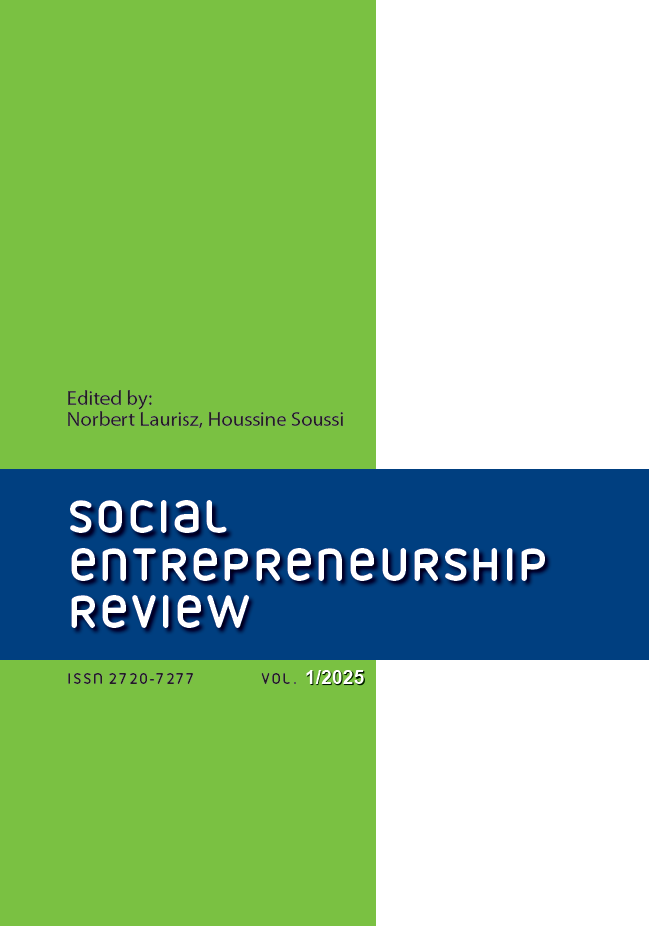Social exclusion from the perspective of hierarchy competition theory
DOI:
https://doi.org/10.15678/ES.2020.1.02Keywords:
social exclusion, rivalry, hierarchy, theory, societyAbstract
Social exclusion can be viewed as an example of depriving an individual of membership in an association or as a significant restriction of rights within a given hierarchy. In this context, social life in a given country can be analysed as not only competition between smaller hierarchies, but also as a hierarchy covering the entire public sphere. The purpose of the article is to indicate the possibility of using the hierarchy competition theory to analyse the issue of social exclusion, shown in different contexts. Social exclusion can also be illustrated by examples taken from various fields of human activity.
Downloads
References
Abłażewicz-Górnicka, U. (2013). Marginalizacja i wykluczenie społeczne w przestrzeni miejskiej. Pogranicze. Studia Społeczne, 22, 231–242.
Barański, J. (2000). Samotność i nostalgia – Szkice z filozofii kultury. Wrocław: Wydawnictwo Akademii Ekonomicznej im. Oskara Langego we Wrocławiu.
Bauman, Z. (2004). Wasted Lives: Modernity and its Outcasts. Cambridge: Polity Press.
Becker-Pestka, D., Kubiński, G., Łojko, M. (2017). Różne obszary wykluczenia społecznego w Polsce – wybrane zagadnienia. Wrocław: Wydawnictwo Exante.
Bruckert, L., Bestelmeyer, P., Latinus, M., Rouger, J., Charest, I., Rousselet, G.A., Kawahara, H., Belin, P. (2010). Vocal Attractiveness Increases by Averaging. Current Biology, 20(2), 116–120. https://doi.org/10.1016/j.cub.2009.11.034
Brüning, C.I. (2017). Insights into the German Interviews of the Kestenberg Archive: Children of Perpetrators and How They Dealt with Their Parents' Actions. W: S.K. Cohen, E. Fogelman, D. Ofer (red). Children in the Holocaust and its Aftermath: Historical and Psychological Studies of the Kestenberg Archive (s. 224–246). Nowy Jork-Oksford: Berghahn.
Domeracki, P. (2018). Horyzonty i perspektywy monoseologii. Toruń: Wydawnictwo Naukowe Uniwersytetu Mikołaja Kopernika.
Dubois, D., Ordabayeva, N. (2015). Social Hierarchy, Social Status and Status Consumption. W: M.I. Norton, D.D. Rucker, C. Lamberton (red.). The Cambridge Handbook of Consumer Psychology (s. 332–367). Cambridge: Cambridge University Press.
Gutowska, A. (2006). Hikikomori – samotność w XXI wieku. W: P. Domerack, W. Tyburski (red.). Zrozumieć samotność – Studium interdyscyplinarne (s. 217–228). Toruń: Wydawnictwo Uniwersytetu Mikołaja Kopernika.
Herrmann, S.K. (2011). Social Exclusion – Practices of Misrecognition. W: P. Kaufmann, H. Kuch, C. Neuhäuser, E. Webster (red.). Humiliation, Degradation, Dehumanization – Human Dignity Violated (s.133-150). Dordrecht-Heidelberg-Londyn-Nowy Jork: Springer.
Hümme, H. (2005). Künstlerischer Opportunismus in der Malerei und Plastik des Dritten Reiches. Brunszwik (maszynopis).
Jedynak, S. (1967). Błąd naturalistyczny, Etyka, 2, 289–297.
Minois, G. (2018). Historia samotności i samotników. Warszawa: Wydawnictwo Aletheia.
Nesterowicz, R. (2013). Wykluczenie społeczne w dobie kryzysu. W: M. Pokrzywa, S. Wilk, Wykluczenie społeczne. Diagnoza, wymiary i kierunki działań, (s. 25–43). Rzeszów: Wydawnictwo Uniwersytetu Rzeszowskiego.
Peace, R. (2001). Social Exclusion: A Concept in Need of Definition?. Social Policy Journal of New Zealand, 16, 17–36.
Pedwell, C. (2016). Transforming habit: revolution, routine and social change. Cultural Studies, 31(1), 93–120. DOI: 10.1080/09502386.2016.1206134.
Rodgers G. (1995). What is special about a „social exclusion” approach? W: G. Rodgers, C. Gore, J.B. Figueiredo (red.). Social exclusion: rhetoric, reality, responses (s.43–56). Genewa: International Institute for Genewa.
Sorokin, P. (2010). Social and Cultural Dynamics – A Study of Change in Major Systems of Art, Truth, Ethics, Law, and Social Relationships. Nowy Brunszwik-London: Transaction Publishers.
Thoreau, H.D. (2010). Walden, czyli życie w lesie. Poznań: Dom Wydawniczy Rebis.
Zbyrad, T. (2013). Wykluczenie społeczne a wykluczenie medialne. Annales Universitatis Paedagogicae Cracoviensis, Studia Sociologica, 1, 96–107.






